The dichotomy of Mario Kart World
Nintendo’s big Switch 2 launch title hints at a different game to the one it delivers.
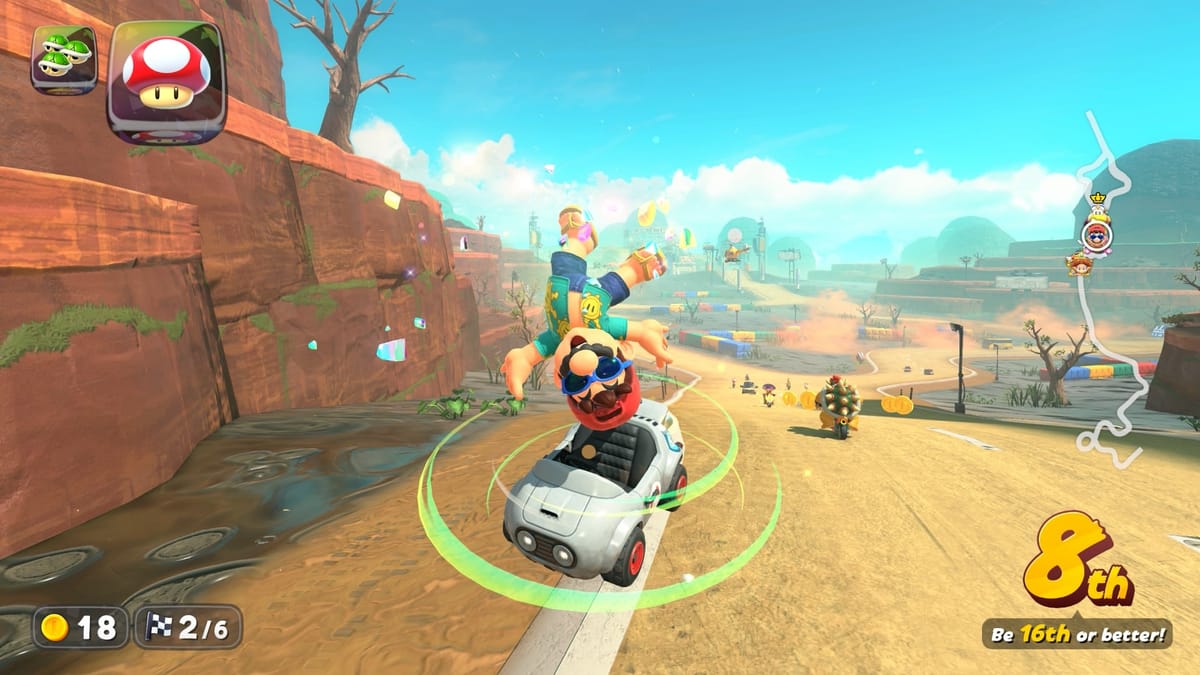
Mario Kart World is a very big game. But it’s also, strangely, quite a small one. It is at once the most demanding game in the series, yet also at times the most sedate. It’s a game full of contrasts, for better and for worse.
The major new change in Mario Kart World is that, as the title suggests, it takes place in a large, open world. In previous games, and indeed in most racing games, the circuits you race on are isolated locations. Here, they’re part of one big map; circuits are dotted across the continent and can be freely driven to, connected to a huge network of roads criss-crossing the land.
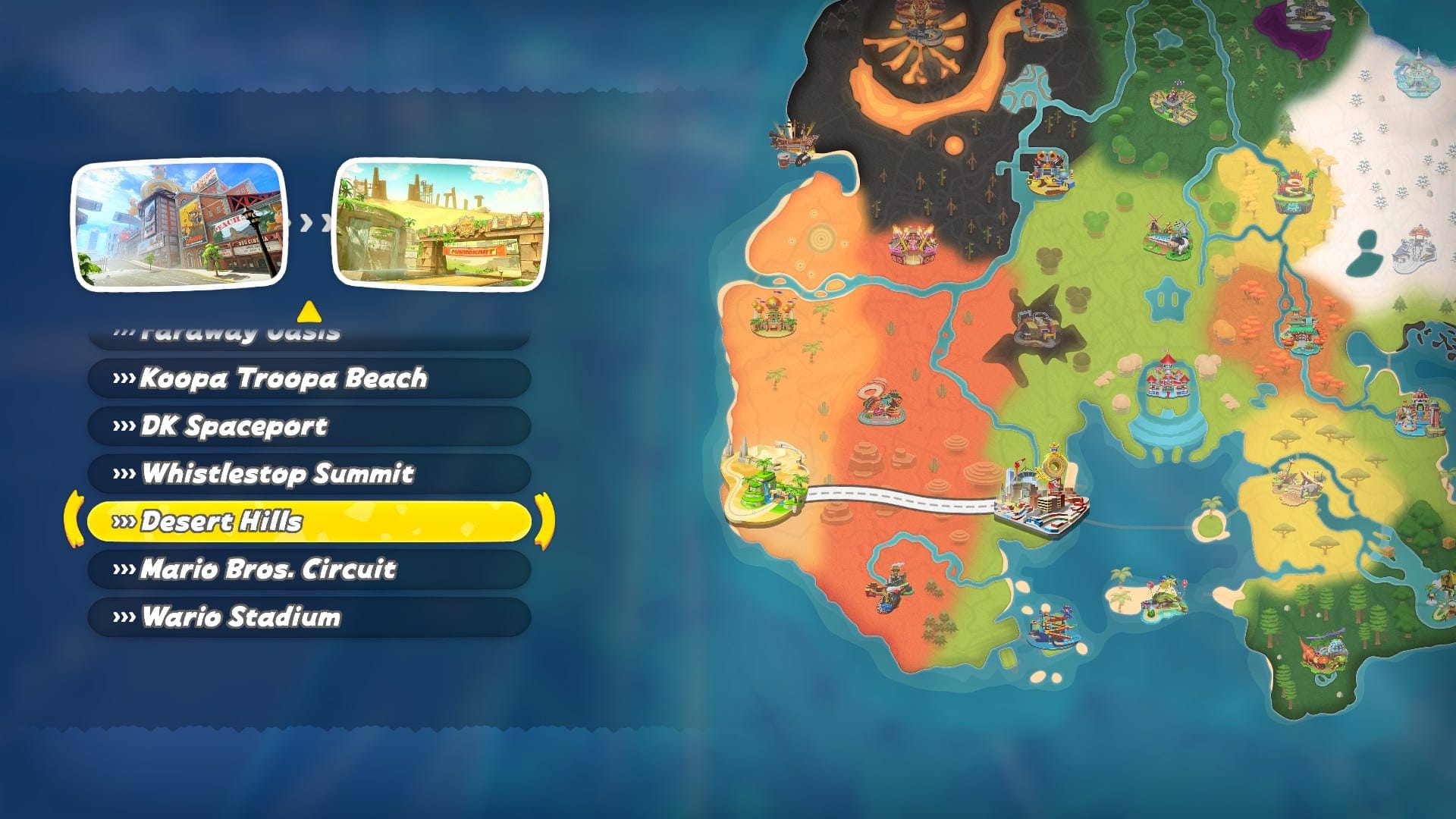
This is built into the structure of the game. Races don’t just take place on those dedicated circuits, but on the roads between the circuits, too. And you can explore these many, many roads at your leisure in Free Roam, triggering various challenges and finding collectables.
The best open worlds are full of possibilities, and at first glance, Mario Kart World feels like it is, too. But it isn’t. There are so many locations and elements that look important, but don’t actually mean anything. It hints at much more than it actually delivers, making it feel hollow and empty.
There are beanstalks here, just like the ones that lead to hidden bonus areas in the original Super Mario Bros., except in Mario Kart World they don’t lead anywhere special. One mountain has a large sign visible from a distance that says “Home of the Rainbow Fragment.” Decades of playing video games tells me there’s a secret there… but there isn’t. It’s just a sign.
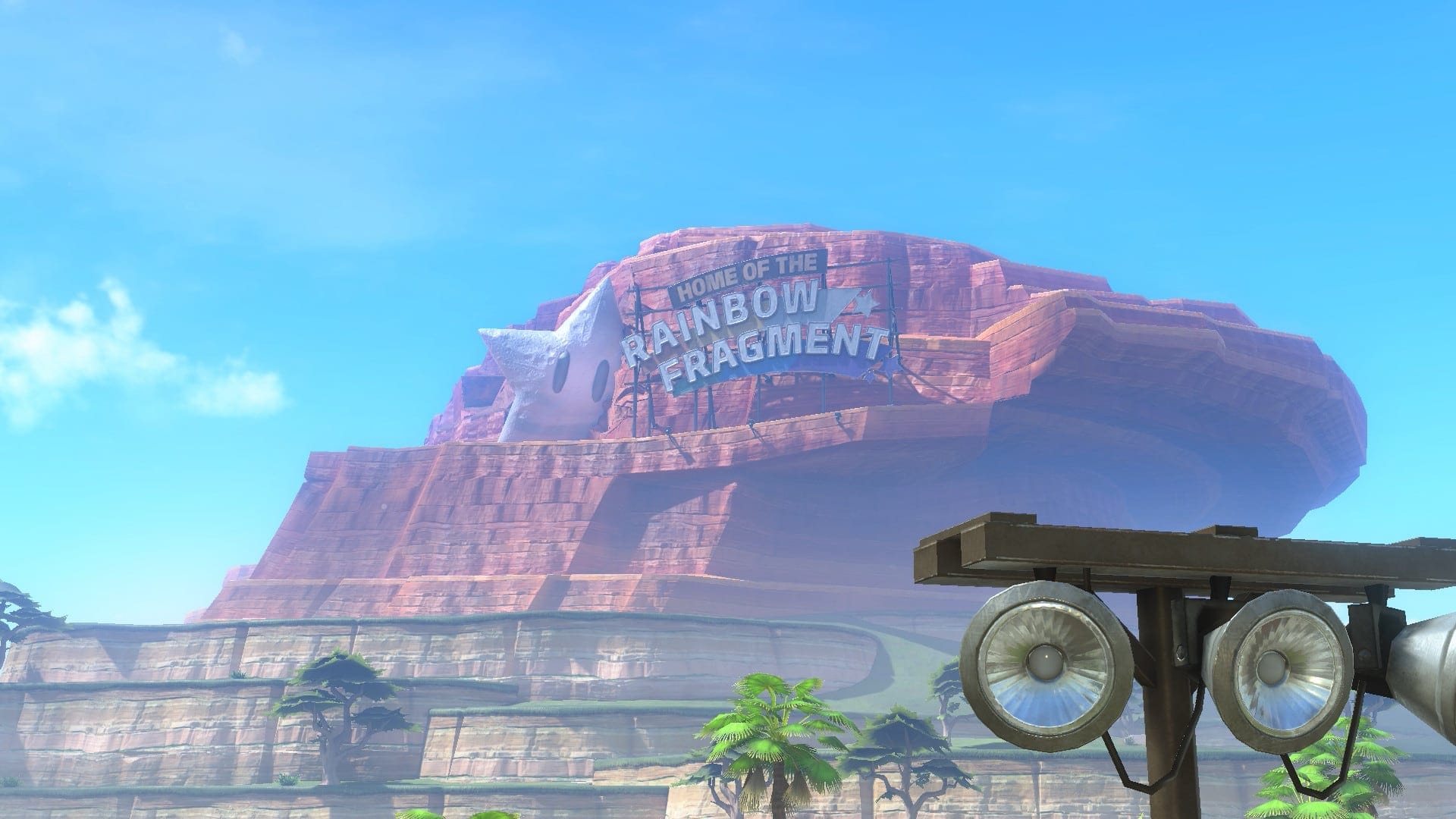
One thing you will find in abundance are hundreds of challenges triggered by P Switches, as well as question mark panels and Peach Medallions to collect. Credit where it’s due: many of these challenges are unique and fun, and figuring out how to reach some of the Medallions are devilishly tough.
But again, this feels like a hint at a deeper game, one it doesn’t deliver on. Other Mario games are filled with collectables too, and obtaining a certain number of them is key to unlocking new worlds and progressing further on. It’s not unreasonable to think that something similar might happen here. At the very least, collecting a certain number of them will unlock secret characters or karts, right?
Nope: they unlock stickers. You can choose one of these stickers to put on your kart. That’s it.
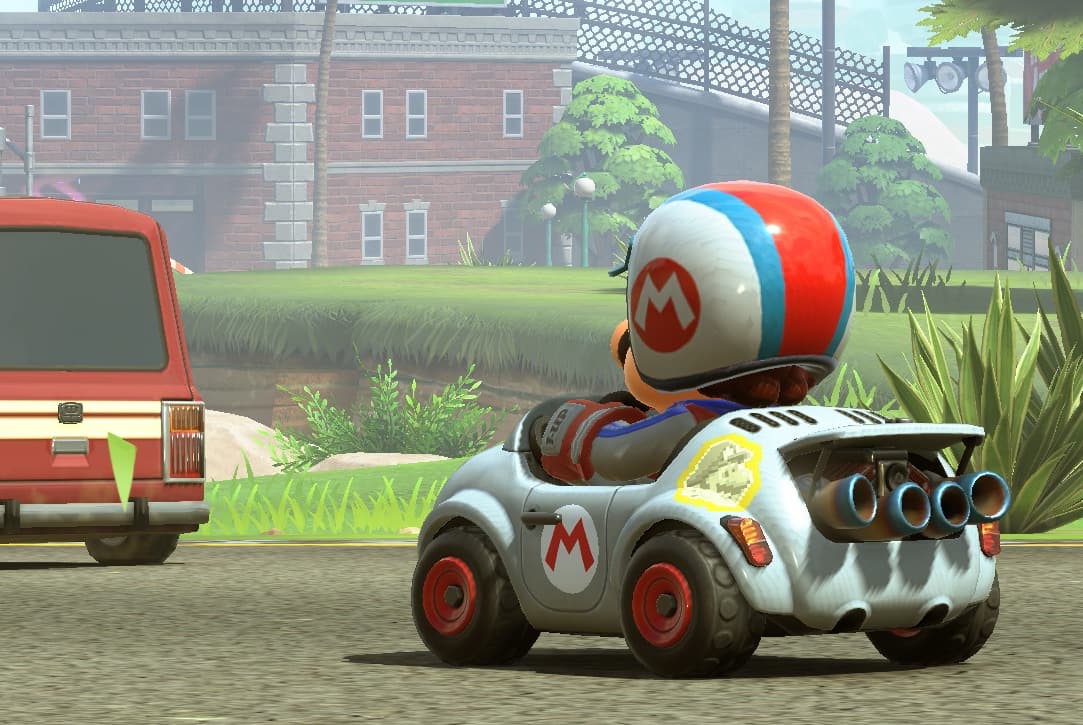
There’s no real reward to chase, no secrets to uncover, and therefore there’s no motivation. There’s hundreds of challenges, yes, but you don’t need to engage with them. Rather than a map brimming with endless possibilities, I see a map filled with much of the same tasks repeated endlessly. Imagine The Legend of Zelda: Breath of the Wild, but without the shrines or towers; just a map full of Koroks and nothing else.
But it does hide Mario Kart World’s most subversive change. With so much attention focused on the open world, what’s gone unnoticed is how it rips up and overhauls the basic strategy of the series.
For decades, the key to driving well in Mario Kart is to drift as much as possible. Drifting triggers a speed boost called a Mini-Turbo, so chaining together as many of these as possible is essential to success.
The tight, twisty circuits typical of the series offer plenty of opportunities to drift — but Mario Kart World doesn’t only feature circuit races. The majority of this game’s 232 tracks are what the community has dubbed “intermission” tracks, open-world roads that connect the circuits. These tracks have proven wildly divisive because they are typically long and straight, and seem to lack the moment-to-moment action of traditional Mario Kart circuits where a corner or hazard is only ever a moment away.
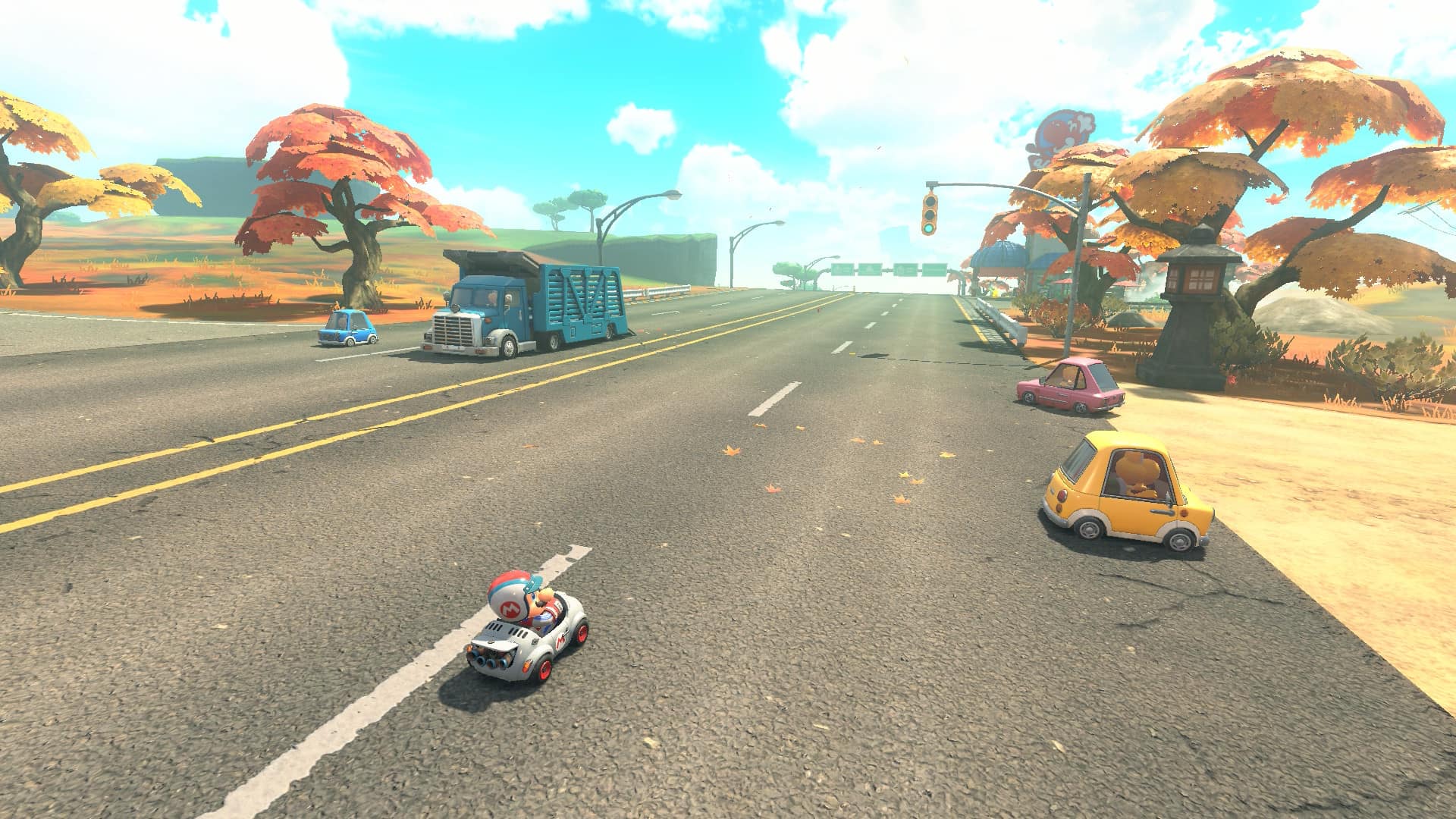
These long, straight “intermission” tracks might make the game seem simpler than previous entries in the series; it might even feel dumbed-down. But it is those tracks which showcase how Mario Kart World has raised the skill ceiling.
You see, it’s difficult to drift on long straight stretches of road, and so chaining together drifts isn’t the fastest way to drive there. Instead, there are an array of new tricks — grinding on rails, wall-riding, and plenty of alternate routes and shortcuts — which may, depending on which you use, be quicker.
The community has already found some wild shortcuts and techniques that look above and beyond anything from previous games. It feels like there is far more scope for skill here, to chain together moves like tricks in a Tony Hawk game — only instead of increasing your score, you’re generating Mini-Turbos.
There has been some uproar among players that Nintendo is seemingly forcing people to play the dreaded “intermission” tracks with their long straights instead of the twisty “circuit” tracks. Make no mistake, this is intentional. Nintendo wants to force players to abandon their drift, to un-learn the muscle memory of constantly sliding, to push you to learn Mario Kart World’s new moves and come up with creative solutions.
It feels notable that your canvas for creativity are the long, straight stretches of road that seem so dull; that they raised the skill ceiling by simplifying the tracks. It speaks to the dichotomy at the heart of Mario Kart World, that gap between what the game appears to be — and what it actually is.





